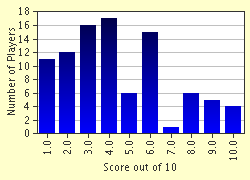Quiz Answer Key and Fun Facts
1. Which candidate received more popular votes AND more electoral votes than his closest rival, yet still lost the election?
2. Which of the following southern states was NOT one that was contested in the election of 1876?
3. Grover Cleveland won the popular vote in the elections of 1884, 1888 and 1892.
4. During which election was the vice-presidential winner decided by the U.S. Senate?
5. In the election of 1820, President James Monroe received 231 of 232 electoral votes cast. From which state was the elector who cast the lone vote against Monroe?
6. Which two presidential elections in the 1800s featured former U.S. generals as the primary candidates?
7. Due to the death of his son on the way to his inauguration in 1853, Franklin Pierce decided against being the Democratic Party's presidential nominee in 1856.
8. How many major party presidential candidates from 1800 to 1896 had previously served as U.S. Secretary of State?
9. Between 1800 & 1896, how many former presidents ran as a presidential candidate on a 3rd-party ticket?
10. In the election of 1800, Thomas Jefferson and Aaron Burr tied for the presidential election with 73 votes each. Which two candidates finished immediately (3rd and 4th) behind them?
Source: Author
trammgr
This quiz was reviewed by FunTrivia editor
bloomsby before going online.
Any errors found in FunTrivia content are routinely corrected through our feedback system.


